
The profitability of your DC fast-charging site depends largely on its location, which covers factors from quality of the land, leasing regulations and zoning permits, to the location’s proximity to customers and to a grid connection, competition in the area, and its potential for future expansion.
The right location differs depending on the investor’s budget, the type of charging behavior being targeted (en-route versus destination), and the customer’s needs. However, example characteristics of a potentially profitable DC fast-charging location include:
- The population living nearby (or commuting through) are on average young, highly educated, and in full-time employment
- EV adoption in the area is already high
- The location is either attached to a popular destination/destination business, or to a high-traffic transportation corridor, such as a major freeway or motorway
- There is minimal direct competition to a DC fast-charging offering in the area
- The location requires minimal landscaping to prepare it for installation (i.e., the ground is not unstable or prone to flooding)
- The site is accessible to customers, staff, and engineers
- There is room for future expansion on-site, to cope with the growing demand for EVs and fast-charging infrastructure
- Projected costs for the DC fast-charging installation are not so high that the investor won’t be able to see an ROI in a manageable lead time
Driving the industry
DC fast charging is driving the EV charging infrastructure industry, already accounting for around 72% of the industry’s annual revenue. The market is expected to grow at a 26% CAGR between 2023 and 2030, ultimately tipping a net worth of USD$ 150 billion. In no small part is this growth driven by EV drivers’ demand for conveniently-located and easily-accessible fast charging. As the number of EV customers on the road continues to increase, the potential for businesses to enjoy long-term, high-yielding returns on investments in DC fast charging is promising.
Of course, there are a number of factors that affect the potential profitability of a DC fast-charging site, and location is one of the most influential.

When selecting a site for Level 3 charging installation, there are a few primary location considerations you must make: geographical, social, and structural. This article discusses the importance of location to the success of your venture; it also walks you through 10 methods for selecting a profitable location and touches on a number of other considerations you may need to make.
Why location is so important to the financial success of a DC fast-charging station
DC fast charging is a lucrative industry to enter, and one which almost any business can get involved with. It can, however, be exceptionally costly to invest in; meaning that for a DC fast-charging station to be profitable, great care must be taken during the planning stages. Location-scouting is one area you will want to devote plenty of resources to, and for good reason.

EV drivers are actively demanding that DC fast-charging stations be readily available to them, not just en route – where we might expect to find gas stations – but also at popular destination locations and in other convenient spaces across urban centers. Their customer loyalty is greatly influenced by the convenience of a DC station’s location, whilst the overall practicality of global fast-charging infrastructure is directly linked to the wider adoption of EVs. In other words, the more and better-located DC chargers are, the more likely drivers are to buy EVs, and the more potential customers your DC venture has access to over time.

Finding a profitable location to set up DC fast charging is also critical because it effectively controls your cash flow, including earnings and expenses.
- Expenses – Different locations will require greater or lesser investment in infrastructure preparation, such as preparing the site for vehicle access and connecting your DC fast chargers to the grid.
- Earnings – Different locations will generate different traffic levels, different numbers of EV drivers with different socio-economic backgrounds, and different competitors to share potential customers with.
5 key considerations to identify the right spot for your DC fast-charging stations
A DC fast-charging station should be located somewhere EV drivers can easily find and readily access, whether that be by a highway or in a supermarket parking lot. Yet whilst it is of course a priority to attract customers from the ever-greater numbers of EV drivers on the road, there is far more that goes into picking the right spot for DC than solely your site’s proximity to drivers. This section explores five key considerations to make when assessing the profitability of a potential DC fast-charging location.
Consideration 1) The importance of analyzing EV-charging behavior and customer trends
Just as you would conduct market research into the buying habits of a target demographic before opening a shop, you can start your hunt for the perfect DC charging location by researching EV-charging behaviors in different areas.

Demographics and EV adoption rates
Demographics don’t necessarily dictate how engaged with DC fast charging a local populace will be, but they can be a useful place to start. For example, today, EV drivers tend to be younger, highly educated, more often male, and in full-time employment, to name but a few of their characteristics. Identifying higher proportions of these characteristics in a target populace may indicate greater potential for business.
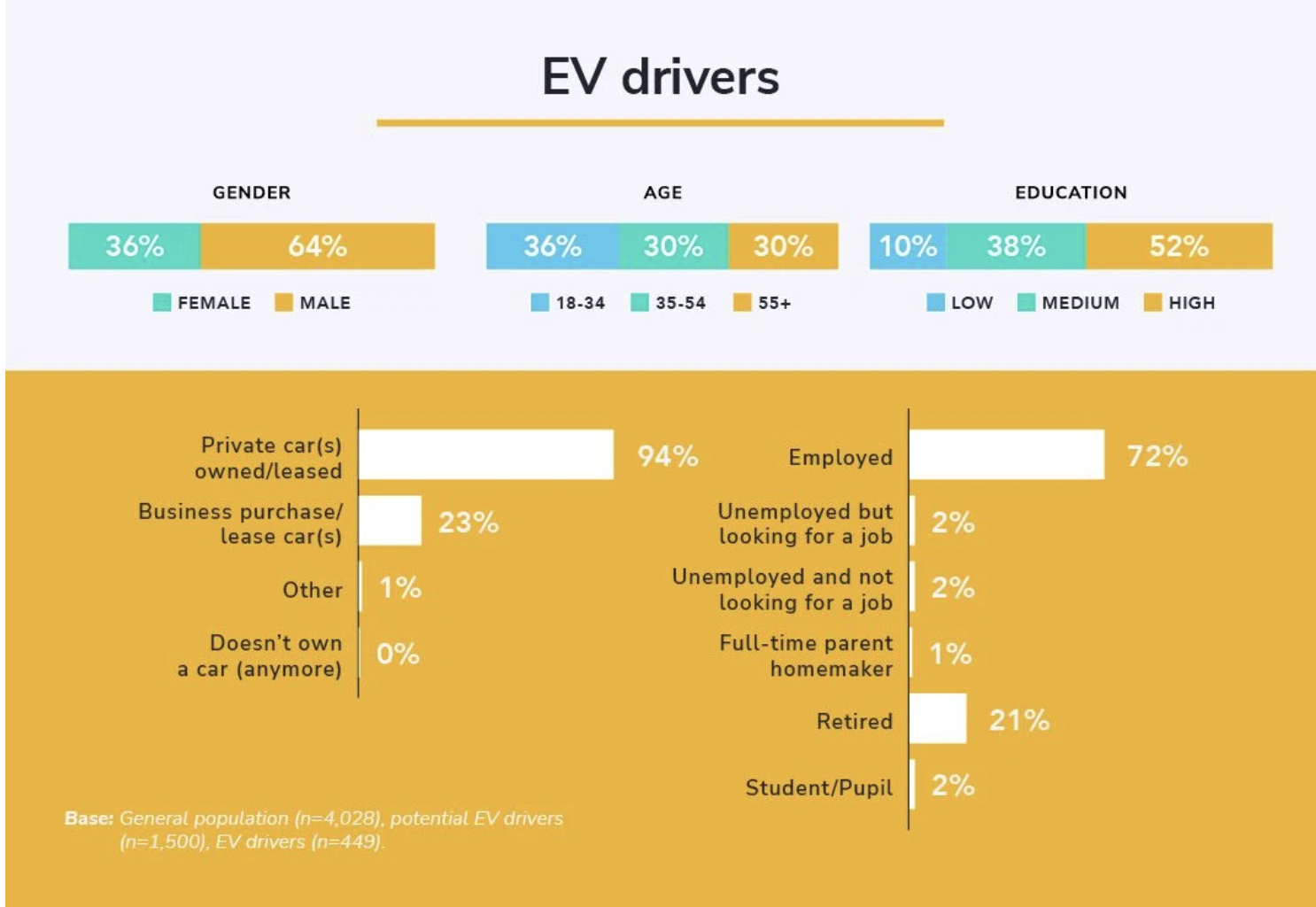
You should also consider the current EV adoption rates in the locations you scout. Though EV adoption rates are set to explode across most developed nations, poor adoption rates at present would likely indicate that a location is not yet ‘ripe,’ or in other words may take much longer to yield a return on your investment.

Depending on how flexible with location you can be, it may be beneficial to begin your search by identifying parts of your country, state, or province that already have a high concentration of EV owners registered as living there. Such a find could represent a ready-made customer base to rely upon for trade.
Adapting your fast charging offerings based on the specific needs of the local population
As you hone in on potential locations for your DC charging infrastructure, you can start to consider what the specific needs and demands of your target demographic are. This research can then be leveraged to ensure competitive differentiation to your offering, because in an industry as competitive as DC fast charging infrastructure, differentiation is key to success.
For example, were you to discover, through local studies and polls, that a large percentage of the local population was employed by a nearby commercial fleet of e-delivery vehicles, then you may want to:
- Choose a location accessible to, and convenient for, these vehicles.
- Adapt the architecture of your final site to weigh in favor of heavy-duty EVs.
Similarly, you may discover that DC charging alone will be insufficient to meet the demands of your customer base. If, for example, you wish to pair DC charging with a shopping center, or by an airport, then a combination of AC slow charging and DC fast charging could work better – to meet the needs of those staying both for longer and shorter durations.
Consideration 2) Proximity to major highways, transportation corridors, and other high-traffic areas
It goes without saying that when scouting for potential fast-charging station locations, you will want to consider the amount of traffic a given location is exposed to, including making notes on how this traffic fluctuates during the day, month, and year.
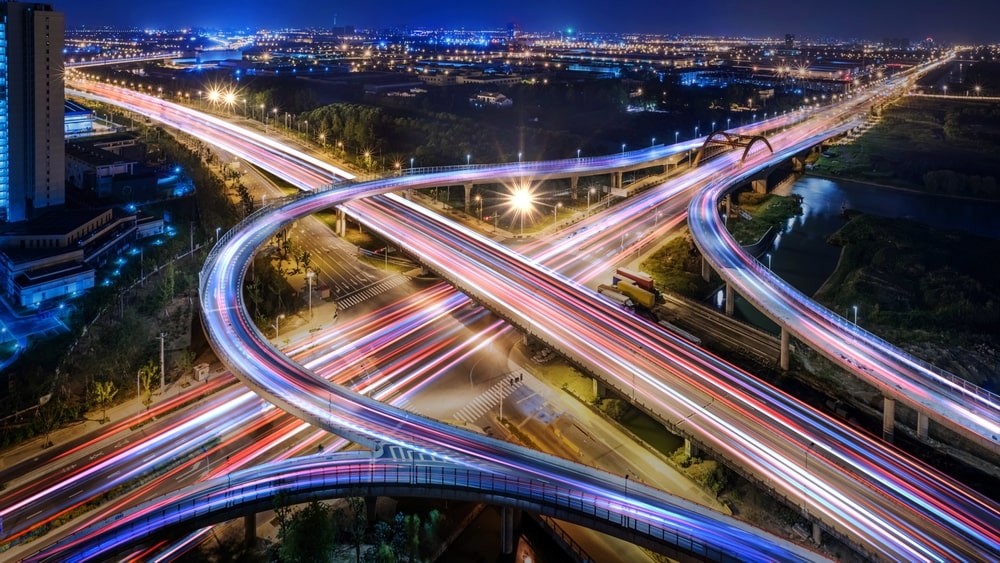
En-route charging locations
Sensible high-traffic sites, which are ‘en route’ for drivers, include:
- Popular commuter routes
- Busy intersections
- Interstate and cross-country highways, freeways, motorways, etc.
Motorists are used to the ubiquitous presence of gas stations at regular intervals along major traffic corridors. By locating a DC fast-charging station along these same routes, you not only tap directly into a consistent and reliable high-traffic customer base, but you also make your service convenient to these customers: they won’t have to change their refueling behavior too much when they buy electric.
In these scenarios, DC is the ideal type of EV charging infrastructure because its higher wattage (around 50-400kW) equates to greatly reduced charging times (between just 17 and 52 minutes on average). It would, therefore, be convenient for customers to factor a stop at your charge point into their trip.
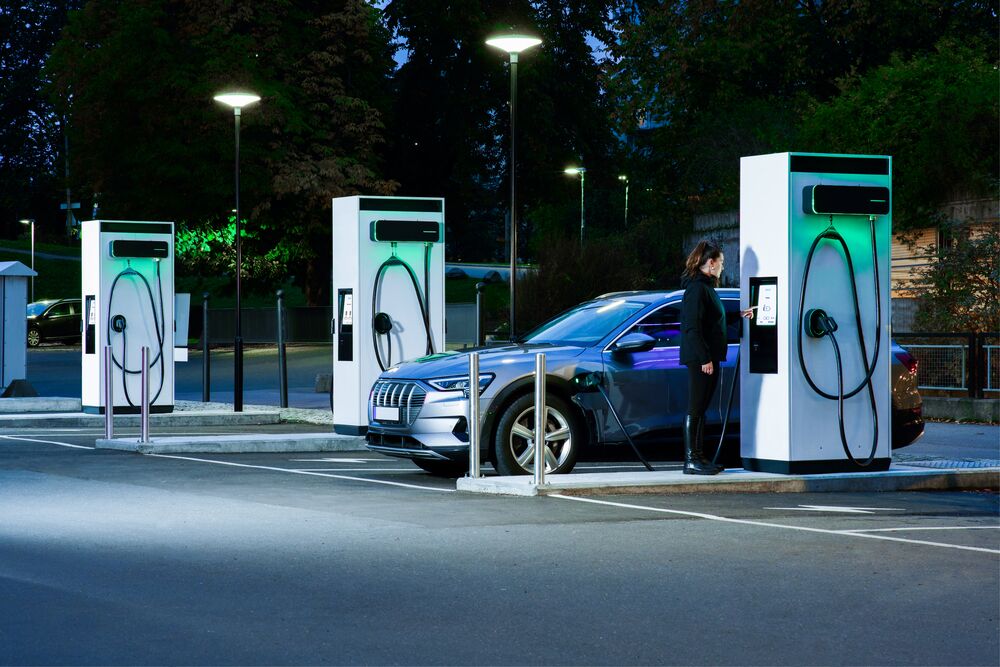
Destination charging locations
Of course, as mentioned, there are also plenty of opportunities to establish a DC charging-station at a location which is not next to a major traffic corridor. Destination charging allows DC chargers to become profitable installations at a vast range of locations drivers typically set as their destination, intending to leave their cars parked there for a short time before returning. These include:
- Parking lots
- Restaurants and cafés
- Movie theaters
- Shopping malls
- Supermarkets
- Sports facilities and gyms
- Arenas and stadiums
- Clubs and bars
- Hospitals
In a REVOLUTION Podcast, Cristina Bu, Secretary General (CEO) of the Norwegian EV Association highlights the importance of destination charging.
In the context of destination charging, the idea of a ‘high-traffic’ location can be reinterpreted to mean any destination that sees a significant number of vehicle visits per day. The more popular the visitor destination, the more likely that DC charge stations installed there would see regular and consistent use.
Consideration 3) Assessing competition in the area
The DC fast charging market is young and fluid, but it is also highly competitive, and as such some of the best locations you scout may already have comprehensive EV-charging infrastructure in place. If this is the case, and the local market is saturated, then no matter how promising the location for other reasons, you may wish to move on to the next prospect.
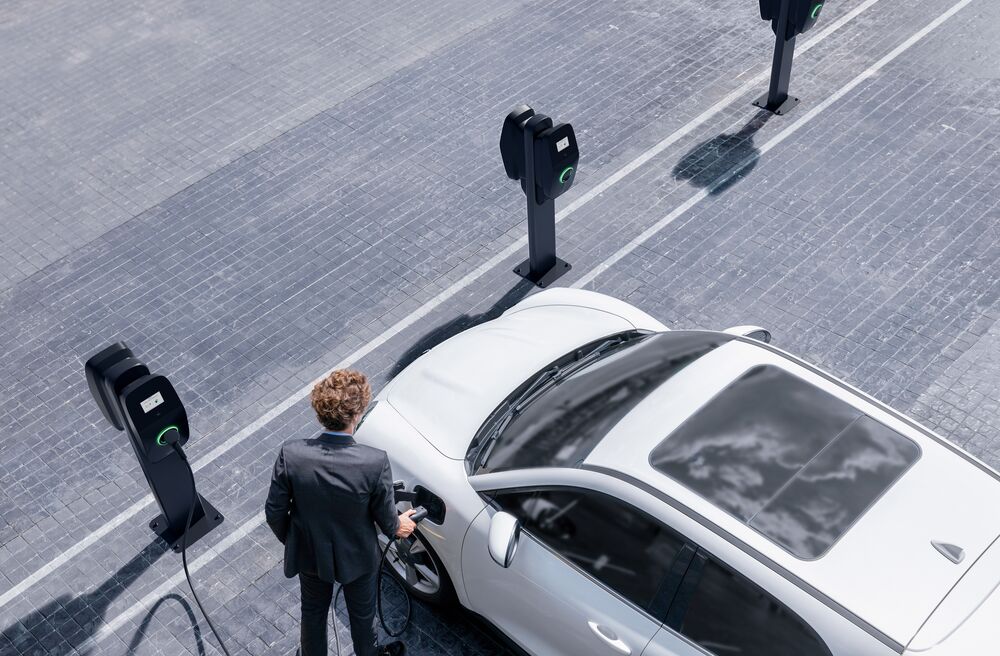
When location hunting, make sure to do your research on the EV-charging solutions already available. You may well find that whilst AC slow chargers are available in abundance, DC fast chargers are lacking – this could be your niche. Equally, you may find that whilst en-route fast charging is already cemented in the area, destination DC is not – again, this could be how you differentiate and make your chosen location profitable.
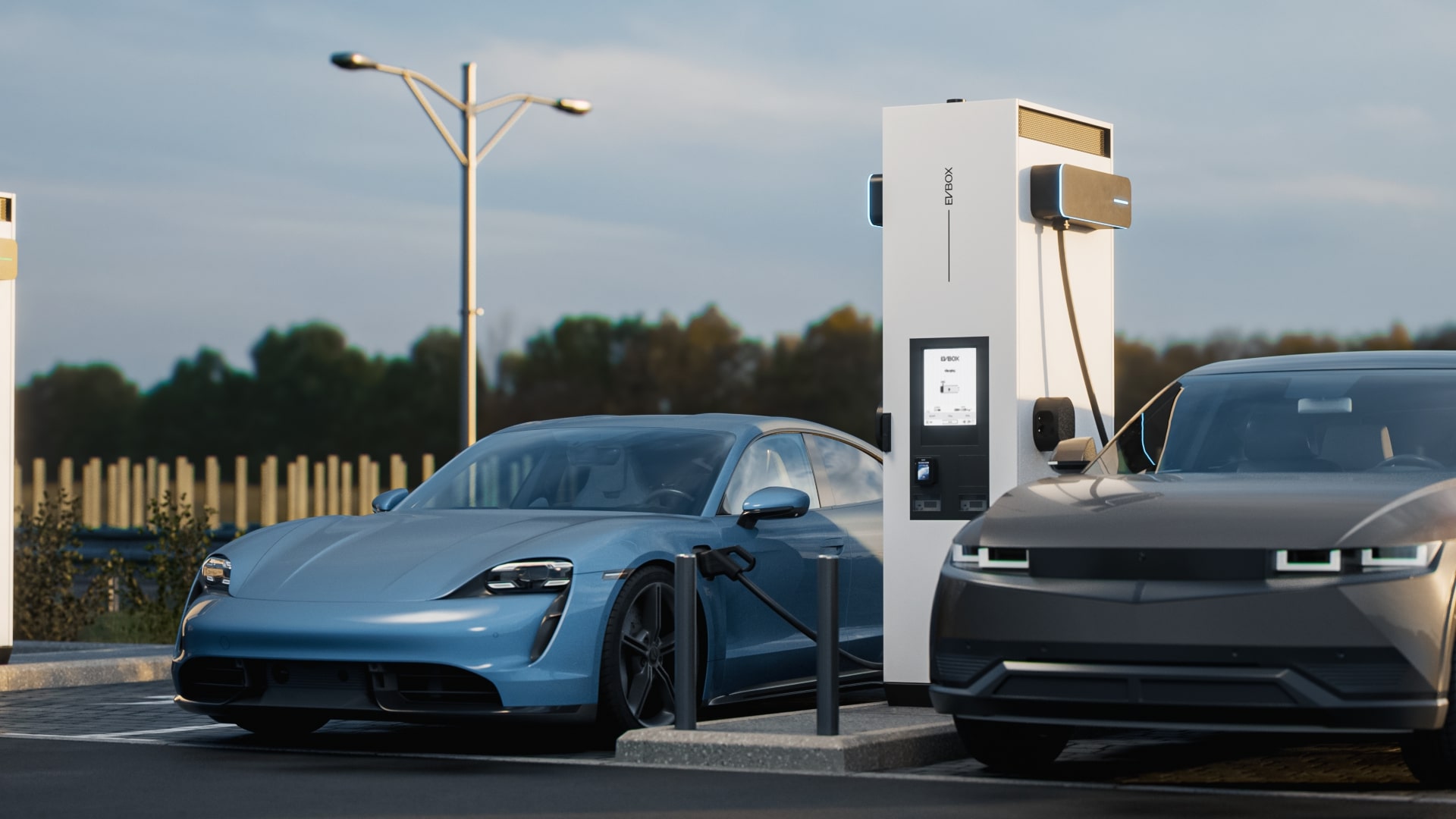
Consideration 4) Land leasing and geographical challenges
In order to be successful in your search for a profitable DC fast-charging location, you must cast a wide net. Not only is the right location hard to identify, but the competition for these locations is also fierce. As Simon Nigh, Head of Geospatial at Carter Jonas, says: “For every new EV charging station opened, around 100 possible sites need to be examined, due to a high attrition rate.”
Land is always a highly sought-after commodity, and buyers with deeper pockets than you may already be assessing your dream DC location for any number of alternative development purposes, such as housing.

Furthermore, the ideal location on paper may, geographically-speaking, prove untenable on the ground. Picture a spot right next to a busy highway, on the outskirts of a densely populated city with a high EV adoption rate, useful facilities and amenities nearby, and without any direct competition in a 20-mile radius. This sounds like a perfect DC charge-point location on paper. Now imagine that the same location is on unstable ground, is covered in woodland, or has a water table prone to flooding – any one of these geographical elements would make building a DC charging hub in this location unviable; either due to safety concerns, high costs, environmental issues, or a combination of all three.
Consideration 5) Grid connection
In order to service your customers with a fast-charging electricity supply, you’ll need a connection to the grid. Almost all brick-and-mortar businesses require a connection to their local and/or national electricity grid, but DC fast-charging stations necessarily demand a stronger, more reliable connection than most. Proximity to a substation is fundamental in reducing the costs of grid connection, whilst some locations may simply be unserviceable, depending on how remote they are.

According to Ronald van der Put, Head of Charging Technology at Fastned in one of our REVOLUTION Podcast episodes, having enough space and being easily accessible from highways or within cities is a must. To build fast charging stations where EV drivers can charge quickly and efficiently, you need an accessible and strategic place.
Companies should request new grid connections in a timely fashion and make sure the requested capacity is sufficient for future growth.
Other challenges to navigate when identifying profitable locations for DC fast-charging
The social, geographical, and grid-connection characteristics of a location should always be your primary considerations when scouting for DC installation. However, they are not the only challenges you will face in your search.
Consideration 6) Regulations and permissions
As a fairly new technology, the regulatory landscape surrounding EV fast charging is evolving at a rapid rate. Moreover, it can differ widely depending on the country or region you’re hoping to operate in.

For example, in the EU the AFIR outlines a number of regulations aimed at helping EU member states achieve their environmental goals. However, charge station calibration laws – which dictate how a fast-charging device measures the electricity it delivers – can differ quite extensively from France to Germany, the UK to the USA.
You must comply with the relevant regulations and laws to establish fast-charging infrastructure in your chosen location. On one hand, the more regulations in place, the more it may cost to establish your DC location initially. On the other hand, fewer regulations may mean a less viable or secure operational environment; whilst regulatory measures brought in further down the line could impact on your bottom line if you’re less prepared to absorb them.
Understanding zoning laws, permits, and environmental regulations
As with any new build or construction project, permission to install a DC fast-charging station in your chosen location will depend on compliance with a number of zoning laws and environmental regulations. Similarly, planning permission must be sought from the relevant local authorities.

Engaging with local authorities and stakeholders to streamline the regulatory process
In the DC fast-charging industry, collaboration is often key to success. Whilst this is a boon to the investor, whose expenses can be shared, and to the service, which benefits from a diversity of experience, it can slow down the regulatory application process considerably. Active engagement with, and open communication between, all involved parties can help to speed things up.
Consideration 7) Staffing considerations
Considering the needs of your customers with regards to accessibility and convenience of location is obvious, but what about staff? Depending on the additional services you offer, your station might need a competent and reliable team of staff, and location will have a lot to do with the viability of recruitment and staff retention. 
Similarly, DC fast chargers will require regular maintenance (both offsite and onsite) in order to work optimally 24/7. The better placed your location is, the easier and quicker it is for engineers to reach you.
Consideration 8) Future-proofing your investment
“If you’re building for today, you’re kind of already behind.” So says Linda Grave, CEO and Founder at EV Driver, in one of our REVOLUTION Podcast episodes.
Here, Linda captures the rapidly growing nature of the EV charging infrastructure industry. Charging stations installed to meet the demand of today will, she posits, find themselves unable to cope with the demand of tomorrow. Unless, that is, future projections for EV adoption and charging technology are baked into your original location search.
When hunting for a profitable DC fast-charge site, consider leaving room for expansion and the installation of more Level 3 chargers in time. Consider how the needs and wants of EV customers may also change, and ask yourself how you could hope to accommodate these desires in future.

For example, commercial fleets are electrifying at a similar rate to, and sometimes faster than, passenger vehicles. The savvy investor may look for a location which could accommodate both in a single DC fast charge site – just like a gas station with different pumps for cars and semi-trucks.
Consideration 9) Calculating return on investment (ROI)
We’d be remiss not to include in this list the practice of factoring ROI calculations into your location scouting. After all, even if a prospective location ticks all of the boxes listed above, the costs required to prepare it for installation, install the fast-charge units, maintain them, and operate them already require well-thought-out planning. Not preparing well, may end up in the costs running so high that even a busy charging hub may struggle to recoup the expenses.

For example, location-based costs which could make ROI untenable may include:
- The need to improve existing grid infrastructure prior to installation in order to meet fast-charge station demand
- A costly connection to the grid owing to an excessive distance between the substation and fast-charge station site
- A costly preparation of the site owing to sub-optimal ground conditions (i.e., the land requires draining or stabilizing)
- The need for expensive roadworks, such as the development of on- and off-ramps for DC fast-charging sites located beside highways, freeways, and motorways, etc.
Analyzing alternative and additional revenue streams to enhance a location’s profitability
There are other ways to make money from DC fast charging besides the direct charge for electricity consumed. Exploring these additional revenue streams may help you to identify cost levers you can leverage to make your chosen site’s ROI more viable. more viable.

Comparing ROI lead times for each prospective location
Rather than waiting until you’ve settled on a final location before calculating its potential ROI, it’s preferable to bake these calculations into your search from the outset. Not only will doing so save you potential disappointment, it will also save time and resources in the long run, since you’re more likely to identify unviable locations earlier in the scouting process.
Consideration 10) Site design
Finally, following a successful search and the selection of a prime profitable location for DC fast charging, you must consider how best to design your site. Site design should involve questions like: How do we attract customers to our location? How do we make our offering clear? How do we make the site user-friendly and accessible? What offerings besides fast charging will we establish on-site? An effective site design makes the customer’s experience as smooth, enjoyable, and useful as possible, so as to increase customer loyalty and spending.

Recapping how to identify a profitable location for DC fast charging
Location is fundamental to the profitability of a DC fast-charging venture. It affects your bottom line, dictates your customer base, and is your opportunity to differentiate your offering as a measure of future-proofing in a lucrative yet evolving industry.
The most important considerations to make when scouting for locations are social, geographical, and with regards to grid connectivity. However, you should also consider compliance with permits and regulations, ROI, staffing, site design, and future growth.
To continue your journey and learn more about establishing your own DC fast-charging business, explore a range of other useful articles on the EVBox blog.
Related articles
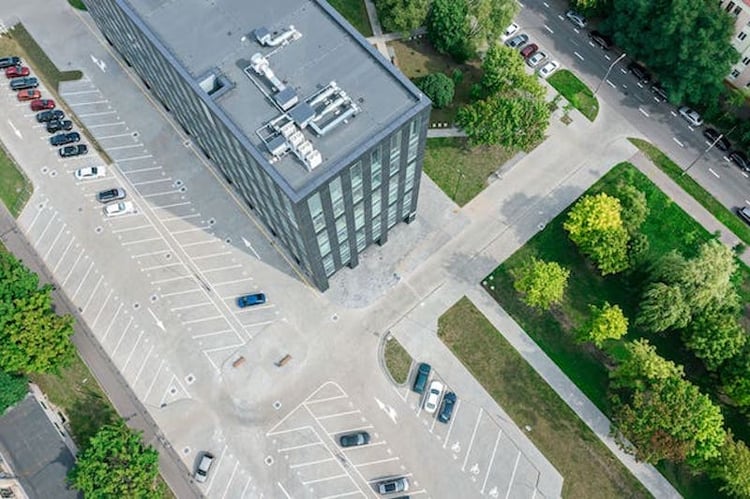
EV charging load management and the importance of cluster load balancing
Electric vehicle (EV) charging stations can add a substantial load onto your building’s power supply, often requiring...
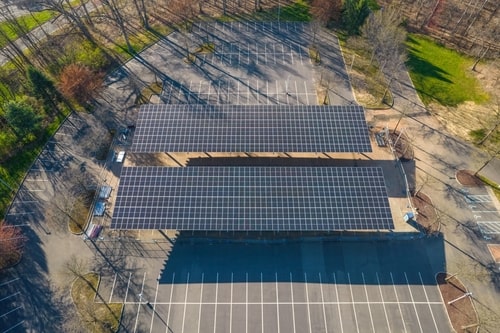
How to design a DC fast charging site
When thinking about installing DC fast charging stations on your site, careful consideration must be given to designing...
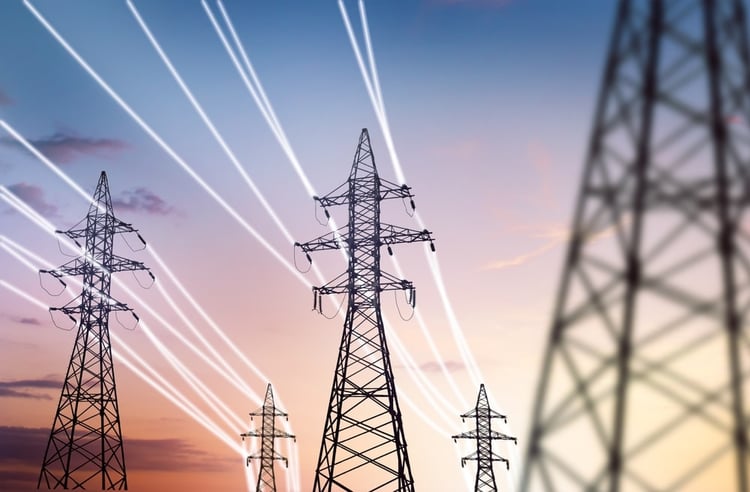
Grid connections for DC fast charging stations explained
The electrical grid is a large and established network delivering electricity from producers to consumers, and...
